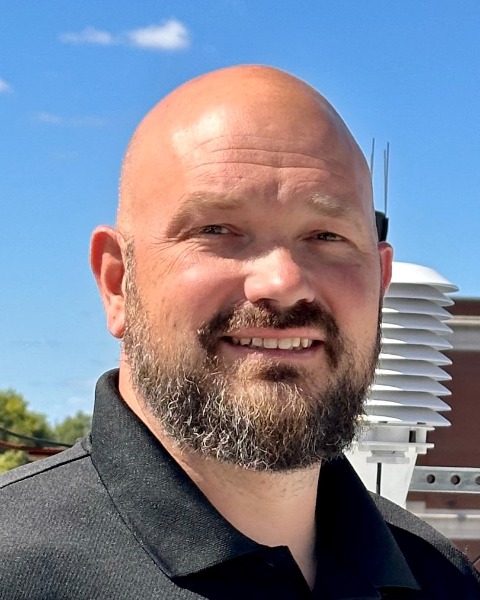Back
One (1) Hour Case Study
MS4 Management (USA Only)
Stormwater Management Emergency Response
Thursday, February 27, 2025
8:00 AM – 9:00 AM ET
Location: E10B
CE: 1 PDH
Level of Presentation: Intermediate

Matt M. Powell, CFM
Environmental Manager
City of Bowling Green
Bowling Green, Kentucky, United States
Presenter(s)
Illicit Discharge Detection and Elimination activities are often portrayed in educational materials, permits, and industry specifications as chronic issues for water quality that are subject to the the bureaucratic processes of the local Municipal Separate Storm Sewer System. Less commonly, however, MS4 programs will encounter spills and releases that are not only detrimental to water quality but are immediately hazardous to the public and the environment. This case study will examine how the Environmental Compliance Division has become an integral competent of the local emergency response process for spills and other releases of hazardous materials.
Full Abstract: This case study will examine a series of industrial and transportation-related releases of hazardous substances that impacted the City of Bowling Green's MS4: an underground storage tank leak that resulted in the evacuation of homes and closing of nearby businesses; an underground leak of surfactants that closed local tourist attractions; the release of organic material from a commercial bakery that resulted in a chemotroph bloom and fish kill in a local stream; and finally, a bulk fuel plant fire that resulted in the release of thousands of gallons of high-octane racing fuel to a storm drain.
The presentation will examine the situational thresholds for elevating the release of pollutants, from a code enforcement issue to one that demands immediate action. Numerous other local, state, and federal agencies may be involved in these activities at every level, from a notification requirement, to providing cleanup funding, to dispatching staff and equipment to the scene to directly participate in the response. The presentation will discuss who these agency partners are, as well as how - and when - to contact them.
The location of a spill or discharge can have dramatic impacts on the ultimate fate of a pollutant as well as which mechanisms will transport that pollutant through the environment. MS4 staff are particularly well suited to understand how the storm sewer system works and and to address the travel of pollutants through that system. We will discuss how to effectively share that knowledge to ensure the storm sewer does not become a mechanism for the degradation of the receiving ecosystem.
Finally, we will summarize these experiences and the lessons learned from these challenges and identify the specific changes made in the policies of the Environmental Compliance Division that enable our staff to more effectively respond to emergencies. Emphasis will be placed on policies that are easily adoptable among MS4 communities across the country.
Full Abstract: This case study will examine a series of industrial and transportation-related releases of hazardous substances that impacted the City of Bowling Green's MS4: an underground storage tank leak that resulted in the evacuation of homes and closing of nearby businesses; an underground leak of surfactants that closed local tourist attractions; the release of organic material from a commercial bakery that resulted in a chemotroph bloom and fish kill in a local stream; and finally, a bulk fuel plant fire that resulted in the release of thousands of gallons of high-octane racing fuel to a storm drain.
The presentation will examine the situational thresholds for elevating the release of pollutants, from a code enforcement issue to one that demands immediate action. Numerous other local, state, and federal agencies may be involved in these activities at every level, from a notification requirement, to providing cleanup funding, to dispatching staff and equipment to the scene to directly participate in the response. The presentation will discuss who these agency partners are, as well as how - and when - to contact them.
The location of a spill or discharge can have dramatic impacts on the ultimate fate of a pollutant as well as which mechanisms will transport that pollutant through the environment. MS4 staff are particularly well suited to understand how the storm sewer system works and and to address the travel of pollutants through that system. We will discuss how to effectively share that knowledge to ensure the storm sewer does not become a mechanism for the degradation of the receiving ecosystem.
Finally, we will summarize these experiences and the lessons learned from these challenges and identify the specific changes made in the policies of the Environmental Compliance Division that enable our staff to more effectively respond to emergencies. Emphasis will be placed on policies that are easily adoptable among MS4 communities across the country.
Learning Objectives:
At the conclusion of this presentation, attendees will:
- Identify the basic characteristics of a discharge that distinguish code enforcement activity from emergency resonse.
- Understand the basic tenets of pollutant fate and transport, and how to use an emergency response guidebook.
- Identify measures that can be taken in their own community to ensure emergency response operations address stormwater issues.

.jpg)
